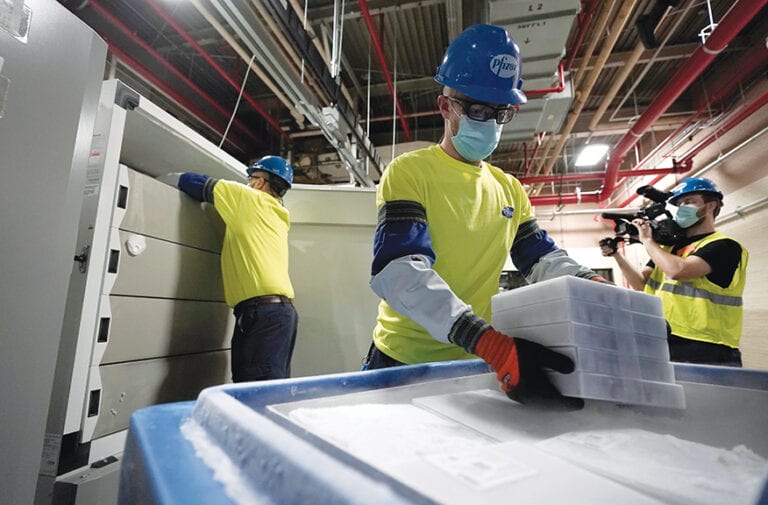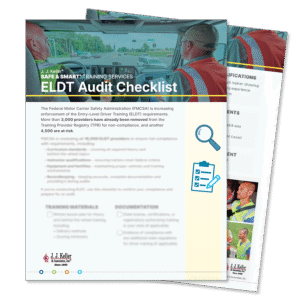November freight levels remained strong as 2020 entered its final month. The American Trucking Associations (ATA) reported that its For-Hire Trucking Index increased 3.7% in November, earning back some of the 5% loss in October.
The November index of 112.2 was 3.8% lower than November 2019, but was strong, nonetheless.
“The 2020 seesaw pattern continued in November, as typical seasonality is not holding this year,” explained Bob Costello, chief economist for ATA. “It was a nice gain, but the rebound was not enough to make up for October’s drop.”
ATA’s numbers are compiled from data submitted by members of the organization, which tend to be larger carriers with a high percentage of contract freight from manufacturing customers. In an economy where shipments of retail goods have been higher than normal while manufactured goods haven’t fully recovered, carriers with a large percentage of manufacturing customers can experience sporadic freight levels.
The Cass Freight Index for shipments, which tracks shipments in multiple modes of transportation, declined 2.2% in November from its October level. Compared to November 2019 however, shipments increased by 2.7%. The Cass Index includes shipments by rail, pipeline, ship and barge, trucking and other modes.
In a statement announcing the decline, Cass noted that the November decline “followed five consecutive months of strong recovery averaging 5.0% sequential improvement (seasonally adjusted), and is likely due to the worsening pandemic numbers impacting the trajectory of the recovery in November.”
Rising COVID-19 numbers might impact some shipping segments more than others. While people are quarantined at home, they can still be ordering retail goods online. The Cass statement noted that shipments in the less-than-truckload (LTL) sector increased for three consecutive months, including a 6.0% increase in November compared to November of 2019.
Spot freight rates, which are more volatile than contract rates, tend to react quickly to market changes. Spot rates have been on the rise for months and set new records in November. Van rates rose to an average of $2.46 per mile, while flatbed rates averaged $2.47. Rates for refrigerated freight dropped a penny from October’s high, averaging $2.68 per mile. That’s more likely a seasonal impact, since refrigerated rates often rise and fall with the availability of fresh produce.
Overall, spot rates continued strong into December, and both spot and contract rates are expected to strengthen into the new year. This time, however, there are more variables than usually faced by the industry.
One of the largest variables is the COVID-19 pandemic.
As November drew to a close, record numbers of positive COVID-19 tests were being reported, hospitals reported overcrowding, and pundits warned of still larger numbers of infections to come. At the same time, vaccinations became available in December, with medical personnel and first responders among the first to receive shots.
It will undoubtedly take months to distribute the vaccine to everyone — and many people have expressed resistance to being vaccinated. The question of when the country will achieve “herd immunity” is up for debate, and scientists disagree on the percentage of the population that must be vaccinated to stop the virus.
In the meantime, positive COVID-19 cases continue growing. President-elect Joe Biden has indicated that federally mandated restrictions, including a mask mandate, could be in store once he takes office Jan. 20.
It may be deemed necessary to shut the economy down again while the vaccine that would allow reopening is being distributed.
Another issue affecting freight levels is inventory. According to a Jan. 4 blog post by FTR’s Steve Graham, increases in sales have brought business inventories down, creating a need for more production. That’s good for trucking — but manufacturers that have been closed or slowed due to COVID-19 restrictions can’t produce at normal levels.
Then there’s the capacity issue, exacerbated by a driver shortage. Currently, the amount of available freight is greater than the number of trucks available to haul it, causing freight rates to rise. Carriers are responding by purchasing more trucks, but finding drivers for those trucks is tougher than ever.
A number of CDL schools have been closed or have downsized due to the pandemic, cutting back on the number of drivers who are entering the market. At the same time, experienced drivers who were laid off or furloughed during the pandemic aren’t coming back as planned; many of them have retired or moved to other occupations, including driving for local delivery services.
The Federal Motor Carrier Safety Administration’s (FMCSA) Drug and Alcohol Clearinghouse, which became effective in January 2020, has resulted in the loss of thousands of drivers who have refused to complete a return-to-work program after testing positive or refusing to test.
The FMCSA’s current consideration of allowing hair-follicle testing for drug use, pushed by trucking organizations, will undoubtedly increase the driver fallout. The legalization of marijuana in a growing number of jurisdictions is becoming the “elephant” in the drug-testing room as drivers question why the use of a legal product during their off-duty hours should be a condition of their employment.
While economic forecasts for the trucking industry in 2021 have generally been favorable, there are enough potential negatives to impact the narrative. Stay tuned. 8
Cliff Abbott is an experienced commercial vehicle driver and owner-operator who still holds a CDL in his home state of Alabama. In nearly 40 years in trucking, he’s been an instructor and trainer and has managed safety and recruiting operations for several carriers. Having never lost his love of the road, Cliff has written a book and hundreds of songs and has been writing for The Trucker for more than a decade.














